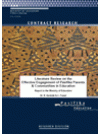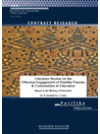Aotearoa New Zealand's population of Pacific Island peoples is a multi-ethnic, heterogeneous group comprising different languages and cultures. This diversity is recognised by the authors of this literature review. We also acknowledge the cultural and ethnic complexities inherent in this literature review that explores the factors underpinning the effective engagement of Pasifika parents and communities in education. Throughout this review, the term "Pasifika peoples" is used to describe people living in New Zealand who have migrated from the Pacific Islands, or who identify with the Pacific Islands because of their ancestry or heritage. Terms used to describe these people vary considerably, for example Pacific Island, Pacific Nations person, Polynesian, Pacific Islander. The Ministry of Education uses the term "Pasifika peoples' to differentiate with other people who view themselves as being Pacific, based on New Zealand being a country in the Pacific region.
Pasifika peoples are not homogenous, hence the use of `peoples' rather than `people'. The terminology includes those peoples who have been born in New Zealand or overseas. It is a collective terms used to refer to men, women and children who identify themselves with the islands and /or cultures of Samoa, Cook Islands, Tonga, Nuie, Tokelau, Fiji, Solomon Islands, Tuvalu and other Pasifika or mixed heritages. The term includes a variety of combinations of ethnicities, recent migrants or first, second, third, fourth and subsequent generations of New Zealand born Pasifika peoples.
Because of the scope of this review, a pan-Pacific approach has been taken in organising the literature. This has facilitated the collation of the relevant generic international conceptual and research based studies, as well as literature pertinent to Pasifika groups generally. A more in depth literature review in the future might well collate ethnic specific studies that highlight inter and intra-ethnic nuances (Anae, Coxon, Mara, Wendt-Samu & Finau, 2001).


